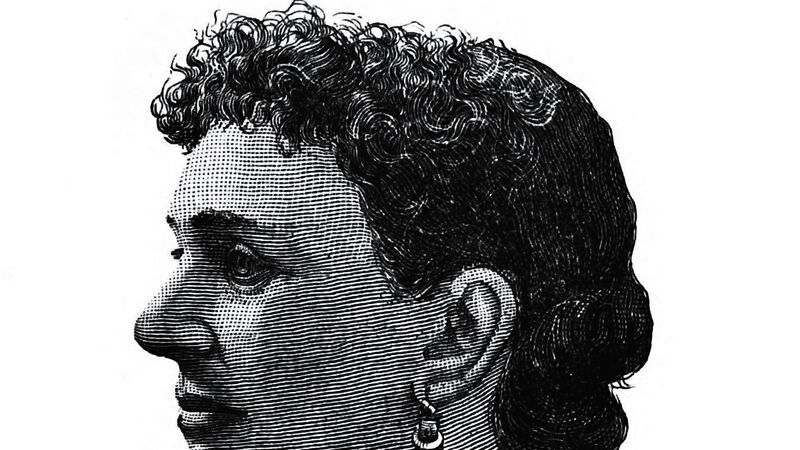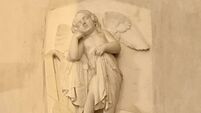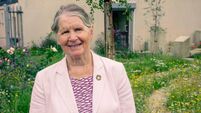Clodagh Finn: The Corkwoman who became top economic thinker in US

Leonora Barry criss-crossed America in the late 1880s gathering information about women’s appalling pay and work conditions and exposed the grim reality facing workers during America’s Gilded Age, the period from the 1870s to around 1900. Picture: Wikicommons
CORKWOMAN Leonora Barry was one of the most important economic thinkers of Gilded Age America. And is now one of the most forgotten.
At least that is how historian and author Dr Eli Cook frames it. And when you read his study of a woman who pioneered the use of statistics to highlight “the abuses to which our sex is subjected by unscrupulous employers”, as she put it, you can’t but agree with him. On both counts.
This column, though, tries to focus not on what’s forgotten, rather highlight what is remembered — and celebrate it.
Dr Cook, a senior lecturer in history at the University of Haifa in Israel, does both in his award-winning book The Pricing of Progress: Economic Indicators and the Capitalization of American Life. He explains how an Irish immigrant earning 11 cents an hour as a widowed factory worker went on to become a prominent labour activist who campaigned for equal pay for women in late 19th century America.
I thought of Leonora this week because a festival celebrating another Cork-born activist ends today. The Spirit of Mother Jones Festival recalls Leonora’s near contemporary Mary Harris, a woman once labelled “the most dangerous woman in America”. She is arguably one of the most quotable of historical figures (“pray for the dead and fight like hell for the living”) — and one of the most colourful.
HISTORY HUB
If you are interested in this article then no doubt you will enjoy exploring the various history collections and content in our history hub. Check it out HERE and happy reading
Mother Jones is now widely known. Not so Leonora Barry, or Sister Barry, as she was known. Born 12 years after Mother Jones in 1849, she too made waves as a prominent campaigner and labour activist who fought for equal pay for women. She also exposed sexual harassment in the workplace, more than a century before it was recognised in legislation.
So how did a woman born in Kilmichael, Co Cork, become the first woman to hold national office in one of the biggest labour organisations in America?
Fiona Forde, the sleuth behind the genealogical entity Irish Family Detective, has recently fleshed out her early life. She was baptised in the parish of Kilmichael on August 15, 1849, the only child born to Honora (née Browne) and her husband John Kearney. Her parents had married in the same parish on February 20, 1838, which was Shrove Tuesday. “Of course being Catholic meant there was supposed to be no marriage during Lent, so there was a mad rush before it started,” says Fiona.
New life in New York
An interesting aside in a familiar story of emigration that takes us to New York in 1852 where her parents hoped to carve out a better life. Leonora got an education and qualified as a teacher at just 16. Soon afterwards, she met fellow Irish immigrant William E Barry, a painter and musician, and they married in 1871.
Her husband died 10 years later: “I was left,” she wrote, “without knowledge of business, without knowledge of work, without knowledge of what the world was, with three fatherless children looking to me for bread.”
Just four months later, another tragedy struck. Her first child, and only daughter, died. As a married woman, she was barred from teaching so she found a job in a hosiery factory where pay and conditions were so miserable that she sought help from the Knights of Labor, a trade union movement which, at its peak, had some 700,000 members.
Within its ranks, she achieved a number of impressive firsts.
She was the first woman to be paid as a labour organiser and later became the only woman to hold national office. As its national women’s organiser and inspector of labour conditions, she was also the first person to collect national statistics about the life of the working woman in America.
In the late 1880s, she criss-crossed America gathering information about women’s appalling pay and work conditions, which she presented in statistical reports to the Knights of Labor.
Her work exposed the grim reality facing workers during America’s Gilded Age, the period from the 1870s to around 1900 when the so-called captains of industry reaped the benefits of a great burst of industrial growth in America.
In 1887, for instance, her report to the Knights of Labor described her trip to factories in Newark, New Jersey, where she found women’s wages were “only one remove from actual starvation”.
“And,” she wrote, “the system of fines in many industries was severe and unjust. Instance: A corset factory where a fine is imposed for eating, laughing, singing, or talking, of 10 cents each. If not inside the gate in the morning when the whistle stops blowing, an employee is locked out until half-past seven; then she can go to work, but is docked two hours for waste power; and many other rules equally slavish and unjust.”
When she challenged these conditions, she said both employers and employees blamed the situation on “monopoly and competition”.
Writer and historian Steven Parfitt summarises how her reports exposed myriad injustices endured by women on the job: “That list extends across dozens of pages … the maid of a wealthy merchant family in Springfield, Ohio, forced to accept castoff dresses in lieu of payment, sending herself and her young child ‘supperless to bed’. The sewing machine operators across the United States required to pay their employer for power and thread, and forced to buy their machines by instalment knowing that many unscrupulous managers fired workers just before the final payment. The women robbed by contractors, often themselves women, so much so that they might make a bare fifty cents for a twelve-hour shift.” Her reports, he writes, catalogue every conceivable trick used against 19th-century working women, and they exposed how men used their positions of power “to debauch girls in their employ whose employment is dependent on their good-will”. As he remarks, there was no 19th century #MeToo.
Parfitt is working on a long-overdue biography of Leonora Barry, which will also chart her post-union life as an impressive orator who campaigned for temperance and votes for women.
Space forces me to concertina the life of this important woman into a few paragraphs, but that does not diminish her legacy. To return to Dr Eli Cook; he thinks the world would be a much more equal and just place if there were more economists today like Leonora Barry.
“In an age when few working-class people have the time and resources to collect and analyse economic data, Barry is a crucial reminder that leaving the world only to ‘expert’ academic economists, who likely never worked a day in their lives in a factory setting, has an enormous impact on the kind of knowledge they generate — and the kind of world we live in,” he said earlier this week.
Much food for thought. Any takers for The Sister Barry festival?
CONNECT WITH US TODAY
Be the first to know the latest news and updates














